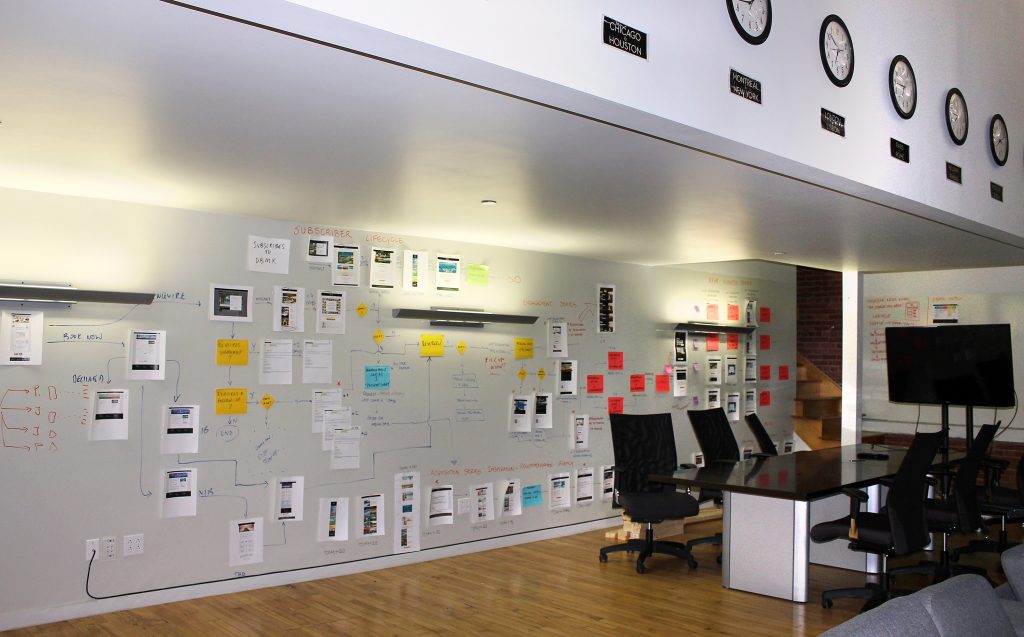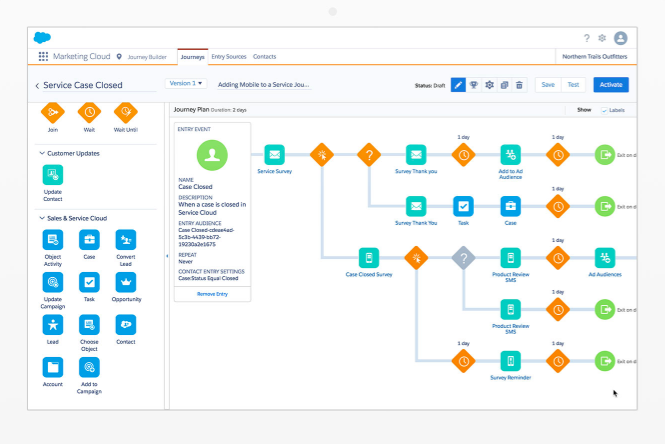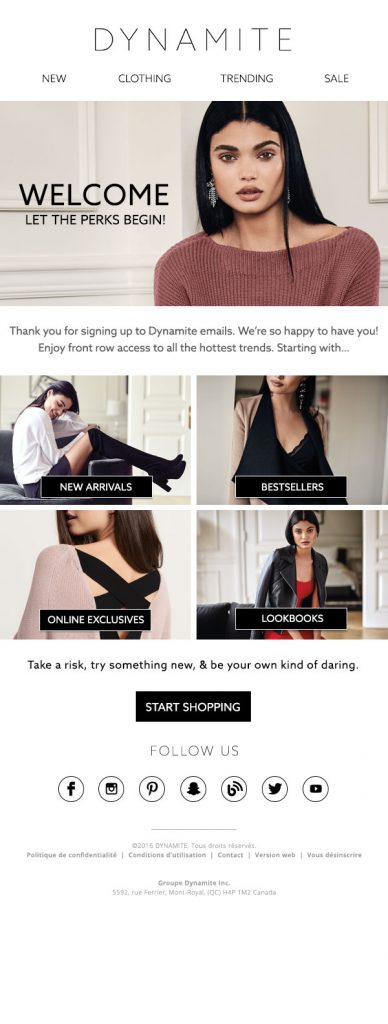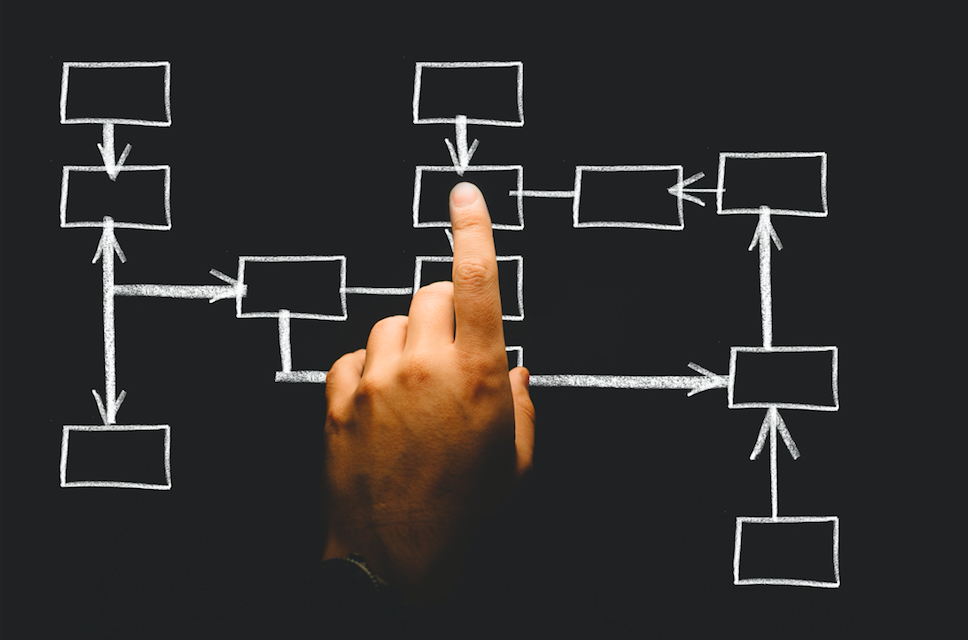Customer Journey Mapping: What You Need to Know

Attracting consumers is much more than sending a generic email to your long list of subscribers. Brands are everywhere, meaning consumers are constantly exposed to new purchasing opportunities: while they travel to work on the subway, while they watch television, while they peruse Facebook and Instagram, you name it. Needless to say, your customers are out there ready to convert — but you need to strategically predict, and influence, their route to your product or service.
In this post, you’ll learn:
- Why journey mapping has become the axis of a successful marketing strategy
- Tactical methods to start implementing journey mapping into your marketing
- The five essential elements to customer journey mapping
JOURNEY MAPPING: THE WHY
Journey mapping has quickly become the go-to for building a long and successful marketing strategy. The customer journey can either succeed or fail based on how well a business can adapt to their customers’ habits.
The most important word here being adapt. A customer journey can take on several different forms that are influenced by trends and data insights. No two customers have the same DNA, and through creating highly malleable paths in your customer lifecycle, you position yourself to send relevant content to your customers.
WHERE TO START YOUR JOURNEY
In several circumstances, a journey will start on a specific trajectory or milestone, in the form of a request for more information, a subscription to a newsletter, or a purchase. We call these “triggers”. The journey for each trigger will change as the data pours in.
Start with basic segmentation that’s dependent on where the subscriber is on their customer journey with your brand
- A journey for a newsletter subscriber (newsletter subscribers)
- A journey for those who requested more information on your product/service (prospects)
- A journey for people who have purchased your products or services (buyers)
Once you have your high-level audience segments, further segment your list by behaviour and engagement — which is where your data comes in.
There are a handful of ways you can collect information — from past purchasing history, web browsing behaviours, surveys, and targeted questions on your subscriber pop-up. Keep in mind that you’re cultivating a relationship over time, so you don’t need to collect a ton of information from the get-go (which likely wouldn’t bode well with your subscribers, anyway). As you map out your touchpoints, identify the spots where you can learn more about the client.
OK, BUT HOW DO I ACTUALLY BUILD IT?
For starters — email tools like Salesforce, Emarsys and Adobe have top-notch tools to help you visualize your strategy built directly in the platform.
But regardless of the platform, you can create your journeys in various ways: use Visio, a pen and paper — or even directly on the wall in your office space. Designing your journeys where your co-workers and partner departments will be able to access is hugely beneficial for a number of reasons:
- You can take a step back for a second and literally walk through the journey in the client’s footsteps. This is a great way to reveal pain points — and ensure you’re plotting the right data behind each decision
- You can show the rest of the marketing team what you’re working on, and brainstorm ways to creatively communicate your messages
- Your creative team — designers, copywriters — can visualize the aesthetic flow of the campaigns within the journey to ensure brand consistency
 Pictured above: a journey wall built by our Partners, Ben & Caren.
Pictured above: a journey wall built by our Partners, Ben & Caren.
If you’re limited for space in your office — no sweat. Tools such as Salesforce Journey builder, Visio or Lucid Charts are highly visual and sophisticated. Regardless of what marketing cloud you opt for, typically you will also get a solid customer success team to help guide you through the process (we can help you with that, too).

Above: the Salesforce Marketing Cloud dashboard.
MY POST-ITS AND PRINTER ARE READY. NOW WHAT?
You have your high-level buckets, segmented by behaviour. Now it’s time to review the objectives of each stage in the funnel: what behaviour do you want to influence? What’s the best time to push a commercial promotion; when should you push great content? What data is the most useful, and where do you need to adapt?
It can be a little overwhelming at first, but if you ensure these four elements are considered in your strategy, you’re primed for building strong relationships.
1. ACQUISITION
How are you going to get people to subscribe to your brand? This is a tricky one — because someone who comes in contact with your brand through an online sign-up has likely had a different experience than someone who became involved at a Point of Sale perspective. From this point of view, there are two things to consider: how are you going to get these customers to subscribe, and furthermore, how are you going to curate your communications based off of their initial engagement? It’s a very different solution depending on each brand, so have a brainstorm with your marketing team and come up with a strategy. We also recommend inviting people from other departments — say, customer service — to offer their perspective
different experience than someone who became involved at a Point of Sale perspective. From this point of view, there are two things to consider: how are you going to get these customers to subscribe, and furthermore, how are you going to curate your communications based off of their initial engagement? It’s a very different solution depending on each brand, so have a brainstorm with your marketing team and come up with a strategy. We also recommend inviting people from other departments — say, customer service — to offer their perspective
Quick ways to build up your database include sign-up widgets on your website and gated content. For B2B brands, downloadable resources that offer detailed insights on a specific topic are a great way to build your list.
2. ONBOARDING
What happens when a client says, “Yeah! I’m ready to commit!”? Introducing: the Welcome Series. This part of the journey is all about familiarizing a customer with your brand. This part of the journey is crucial — it’s like the first date in a potential long-term relationship.
- You can segment your Welcome Series based off of key items such as location and language. But keep in mind that segmentation is only worthwhile if your data proves that customers within each of these segments have varied behaviours. If you’re starting from the ground up and you want to keep it simple — segment by language.
- As for the content of your email, make sure you let your subscribers know what you’re going to offer them and when. Inform them of any benefits of being a part of the community, give insight on how to share your brand hashtag on social, and highlight any exclusive offers you have. Never over-promise and under-deliver to your subscribers: When building brand loyalty, maintaining your credibility and trust is vital. This part of the journey is meant to be educational rather than promotional: You want to show your customers why your brand, and its values, are relatable — rather than how they can buy your product.
3. ENGAGEMENT
This is where personalization comes into play — and you start building loyalty.
As data piles up, you can personalize your emails and begin to segment based off of consumer behaviours. Consumer A and Consumer B have two entirely different interests: Consumer A is all about accessories; shoes, necklaces and scarves are always on the browsing agenda. Consumer B, on the other hand, favors your big-ticket items like cashmere sweaters and leather jackets. From this browsing information, you can assume that Consumer B is willing to drop more on a purchase at one time, while Consumer A will buy a few things here and there throughout time.
Using this information, you can segment your journey accordingly. The journey for Consumer A might contain more frequent sales and discounts, and advice on how to accessorize for each season. Consumer B might be more interested in the details of your product — and expect information that confirms your leather jacket is the best out there.
But, before the consideration of making a purchase even begins, you have to offer your subscribers engaging content to prove your relevancy.
What does engaging content look like? Engaging content is meant to start a conversation. Don’t talk about yourself; cater the content based off of the relevant data you’ve used for segmentation. Here’s a handful of examples:
- When an athleisure brand sends out a healthy weekly meal plan — with recipes — to their subscribers;
- When a magazine sends you an article, first thing on Monday morning, based off of your favorite content topics;
- When a fashion retailer sends you a cool #OOTD gallery from one of your favorite influencers
4. RFM SEGMENTATION FOR BUYERS
How can you turn 1st-time buyers into repeat buyers? Even more, now that you have repeat buyers, how can you make them buy more and more?
For most businesses, the Pareto Principle is a useful theory for assessing where most revenue is generated: 80% of earnings come from 20% of customers. With this in mind, it’s key that you design a specific strategy for top buyers to ensure you have compelling marketing to keep engagement high, and purchases coming in. This is a direct channel CRM marketers need to focus on to prove their marketing for buyers is effective.
But where to start and how to know where to allocate budget within the buyer’s audience? That’s where RFM segmentation comes in. RFM segmentation is a simple yet efficient way to segment your audience to create variant strategies per each segment.
RFM stands for the three dimensions:
- Recency: How recently did the customer purchase?
- Frequency: How often do they purchase?
- Monetary Value: How much do they spend?
To start with your segmentation for RFM, you have to assign a score for each dimension, and segment your audience accordingly. At the end of the exercise, depending on the scale you used for your scoring, you’ll end up with highly specific segmentations with particular characteristics. The characteristics of each segment will inform you strategy.
For example, you’ll quickly identify your VIP customers: those who have made more than X purchases, who made their last purchase just a few days ago, and spent $xx. These customers require a specific approach, and you need to make sure you’re taking care of them based off of their purchase behaviour.
Once you have your segmentation and data well understood, your next task is coming up with the right incentives to increase frequency, price point and recency for each segment. Test it!
 5. WIN-BACK
5. WIN-BACK
What happens when a subscriber goes dormant? They’re not opening emails anymore or visiting your site? How do you start to cultivate a relationship with them again?
One tactic often used is offering promotional content, where you’ll send them some sort of offering to help revitalize the relationship — but this likely won’t be seen by the unengaged subscriber. Instead, focus your time on diagnosing the problem: Could it be that the emails aren’t being delivered? Do you need to send text-based emails from a real employee to ensure your email arrives in the desired inbox? Dig in to determine the problem.
This is also where collaboration with other teams is key, so you can gain greater insight into the issue — be it IT, sales, or even accounting. It’s always best practice to send a customer survey to ask why they disengaged with the brand, and what we can do to improve on the second chance.
IT’S A PROCESS IN CONSTANT EVOLUTION
Creating brand loyalty doesn’t happen overnight: You need to listen to your data.
After your customer journey is running and performing, the entire process has only just begun. It’s key to remember: Performing today might not mean performing next month. You need to optimize constantly and rely on advanced tools — like cohort reports — to advance your strategy.
You should be asking yourself: What are we learning from each touchpoint or each drop-off? Your journey will be in constant flux, just like your consumers. Remember to always stay up-to-date with the trends of your target personas: Is Instagram becoming the most significant app in their everyday life? Are they way more engaged with video content than text? How much might they be willing to spend on specific items? Combine your internal data with external insights to position your journeys on the trajectory towards success.

